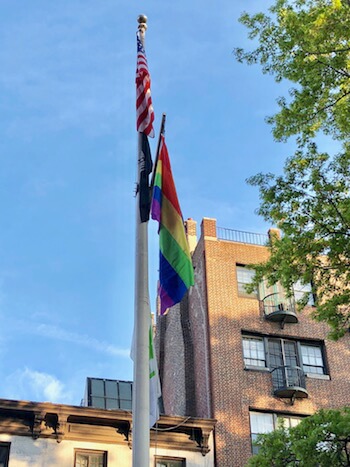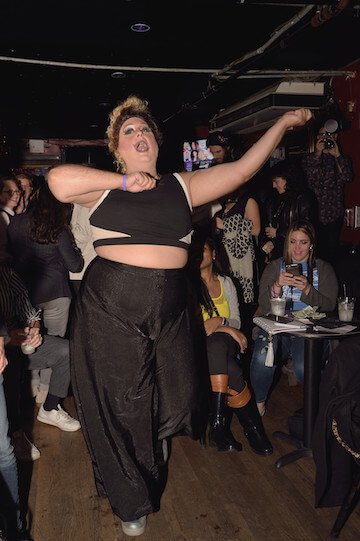Tommy Lanigan-Schmidt.
Artist Tommy Lanigan-Schmidt was a street kid who arrived in New York in May 1966 and participated in the Stonewall Rebellion. But he was also someone who frequented the bar itself, which opened in 1967. And while he concedes it was a dive bar, he loved it because it was unique among gay bars of the time in allowing “slow dancing where you could have a nice, full embrace — the unity of one person with another person.”
Lanigan-Schmidt, now 67, believes the slow dancing in a public place was in itself a “revolutionary” thing and accounted in part for the violent reaction to the police raid in June 1969 that we now know as the Stonewall Rebellion. “You could connect with someone,” he said. “That started the revolution.
“We were in our teens and hadn’t gone through the same things that older people — over 25 — had gone through. We were runaways. I remember a kid who had boiling water thrown on him by his mother for being gay. Outside we could be murdered. Inside we were safe.”
He said that when you went into a bar like the Tenth of Always at the time, “if you touched, they would throw you out.”
He recalled a bouncer “on a power trip” who decided who could get into the Stonewall. “It was a combination speakeasy, juke joint, lawless and below the radar — it was all those things combined,” he said. “It was a deeply romantic place.”
The first night of the Rebellion, Lanigan-Schmidt couldn’t get in and came back when the raid was in progress. “More and more people kept showing up,” he said, “and suddenly everyone was together” — which allowed people to act up in ways they had never considered before.
“That night we were angry, an anger that was not being reflected upon, an impulsive anger at not being able to dance — a total body thing,” he said. “It was a visceral feeling.”
Lanigan-Schmidt, who has taught in the MFA program at the School of Visual Arts for almost 25 years and been exhibited at MoMA’s PS1, said that he hopes that the Stonewall, which occupied 51 and 53 Christopher Street (now Stonewall Place) in 1969, would get bought by someone “who would turn it into a gay museum. It should be like the Tenement Museum” at 97 Orchard on the Lower East Side, where tenement life circa the 1870s is preserved. He suggested using “gay acting students” to play the 1969 patrons and protesters.
“If they wanted to recreate the Stonewall,” he explained, it was all pretty bare bones. “It was a Mafia bar with plywood painted black on the walls and two juke boxes,” he recalled. “The best way to inform people is to give it that flavor so that people can get into how down and out it was — not a nice, middle-class bar.”
The interview my “Gay USA” co-host Ann Northrop and I recently conducted with Lanigan-Schmidt follows:


































